10 Surprising Samoyed Facts You Will Love to Know
Updated on
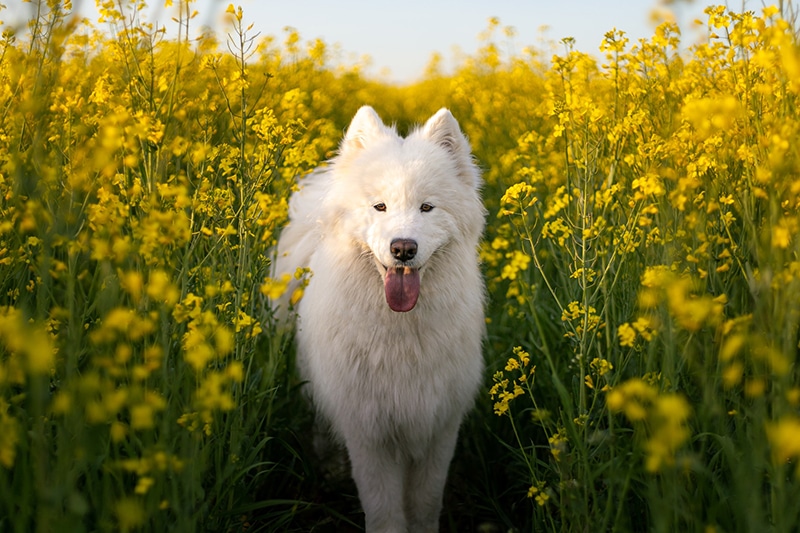
The Samoyed dog breed has been around for a long time—approximately 5,000 years to be exact! Also known as “Sammies,” this ancient breed is friendly and gentle with gorgeous white fluffy coats.
They have a rich history with surprising facts worth reading about, so come along and explore the fascinating world of the Samoyed.
The 10 Facts About Samoyeds
1. They Have a Perpetual Smile for a Reason
These dogs’ smiles never change, and even though they are friendly and happy dogs, the “Sammie Smile,” as it’s called, has a purpose. The corners of the mouth are upturned to keep them from drooling. Many dog breeds drool, and it’s something that dog parents must contend with, whether they like it or not. But why would the Samoyed need this ability? Since they are natives of Siberia, which is a frigid climate, drool would freeze to the face in the harsh, minus 60-degree weather.
2. They Worked Closely with the Nomadic Tribes of Siberia
After the Ice Age, reindeer became the main source of food for the nomadic tribes of Siberia. The Samoyed helped these people survive by herding reindeer, and the Samoyed could withstand the harsh climate to handle the job. In contrast, no other breeds at the time could endure the miserable, freezing conditions. These nomadic tribes cherished and valued these dogs and even allowed them to sleep in their tents.
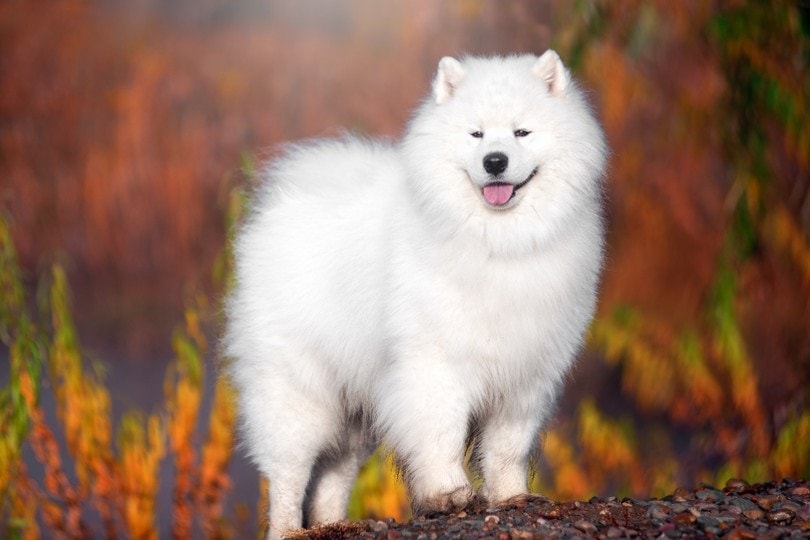
3. They Need a Job to Do
Samoyeds are active dogs that must have a job to do in order to be happy. You can’t place a Samoyed in your backyard by himself and expect good things; they are smart and will be destructive to show their displeasure. They get bored quite easily and will show their frustration and aggravation through destructive behavior. They also make excellent therapy dogs and excel in lure coursing. They also do well with agility, obedience events, herding trials, and weight-pulling.
4. They Are Genetically Close to the Wolf
Samoyeds are one of 14 ancient breeds that have not been dramatically changed by humans through selective breeding. In 2011, scientists discovered a 33,000-year-old fossil of a dog that was found to be a hybrid dog/wolf, and it was discovered that it was more dog than wolf. Through DNA testing, researchers found the fossil was closely related to the ancient Samoyed.
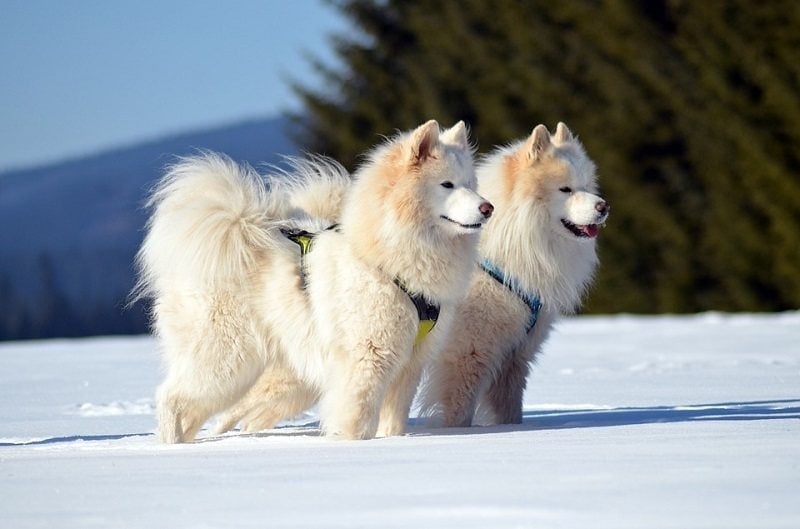
5. They Love to “Sing”
Given they have close ties to wolves, these dogs are known for their howling. You can entice them to sing by playing music or making howling noises yourself, and when there’s a pack, you’ll hear a nice blend of melodic yodeling. Also, you may even hear some harmonizing within a pack, which we think is pretty cool.
6. They Thrive on Human Contact
These dogs are friendly, personable, and love human companionship. They are extremely adapted to people and do not do well being left alone for any length of time—this may come from their history of working close with the nomads of Siberia, as they stayed in close quarters with them in tents.
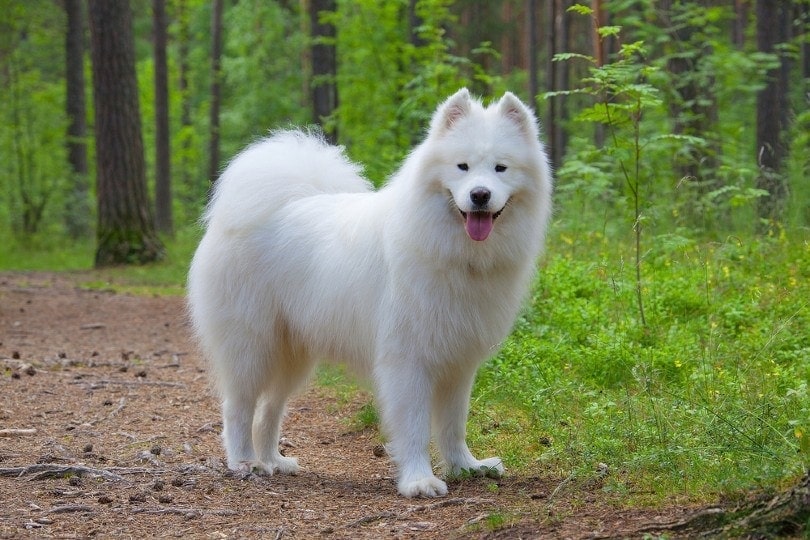
7. They Are Relatively Odorless
For a double-coat breed, these dogs are relatively odorless. Still, they need regular grooming maintenance to keep the coat from matting, along with the occasional bath. Samoyeds with the right kind of stand-off coat are known as “Teflon dogs” because dirt doesn’t seem to stick in the fur. They don’t even require baths to get dirt out of the coat; a forced air dryer will blow dirt and dust out with ease.
8. They Shed a Lot
While no true hypoallergenic dogs exist, the Samoyed is considered relatively hypoallergenic because their coat produces less dander than other thick-coated breeds. Samoyed “blow” their undercoat twice a year, and owners have been known to collect the shed fur to spin into yarn to make clothing. Their fur actually makes an ideal material for this purpose because it’s odorless, warm, and strong, making it an excellent alternative to sheep’s wool.
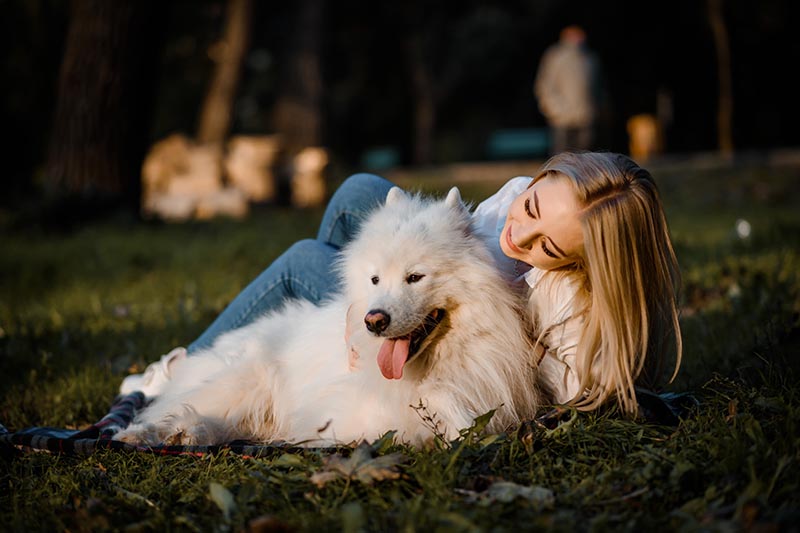
9. They Have Been Used for Trips to the Poles
We’ve learned their thick double coats can withstand the harsh and brutal cold climates of Siberia, which made them an excellent choice to accompany adventures to the North and South Poles. These expeditions occurred during the 19th and 20th centuries, and explorers knew they would make perfect sledding dogs.
In 1911, an explorer, Roald Amundsen, used Samoyeds for an expedition to the South Pole, using a team of 52 dogs. The pack leader, named Etah, was the first dog to ever set paw on the land. The expedition lasted 99 days, but only 12 Samoyeds survived.
10. Queen Alexandra Was a Fan
Alexandra of Denmark, a fancier of dogs, was a big fan of these incredible dogs and an avid supporter. She kept them in royal kennels, being sure to give them all personal attention. She became a fan after she received one as a gift and quickly worked to promote awareness about the breed. Descendants of her dogs can be traced back to Samoyeds of today.
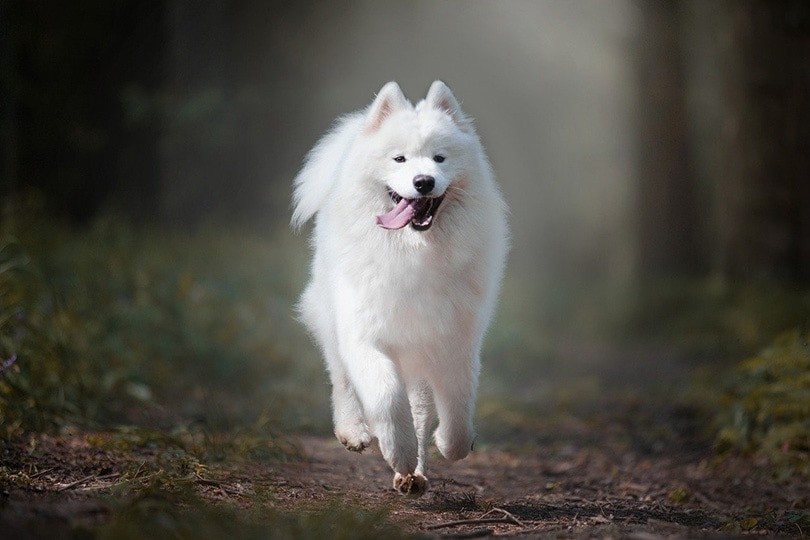
Final Thoughts
Samoyeds are incredible dogs with a rich history and surprising facts. They are highly energetic dogs that do well in packs, and they thrive on human companionship. They do best in cold climates and are happiest when they have a job, such as herding trials, agility, lure coursing, weight-pulling, and obedience events. They have unique white coats that can be made for clothing material, and they can sing.
Needless to say, the Samoyed is one unique dog breed.
Featured Image Credit: Barcs Tamás, Unsplash











